Friday 10 March was a misty, atmospheric morning, and I was collecting tiny seashells at Porthchapel beach, about three miles south-east of Land's End, Cornwall. I'd had other plans that didn't work out, so it was a spur-of-the-moment decision to go there. I was alone on the beach and spent an hour and a half crouched down, concentrating hard on the strandline in front of the advancing tide, unaware of much around me except the sounds of the sea. I saw a delicate sea spider walking at my feet, and wondered at how they can survive in all that swirling water and rock and coarse sand where beach levels can be altered by metres in one stormy tide.
As I was leaving towards the cliff path, just before midday, I spotted a dark bird flying from over the beach towards the cliff. I almost dismissed it as a ubiquitous Jackdaw, but something made me look at it (maybe the way it flew struck me as odd), and it was much too small. Blackbird and Starling crossed my mind, but neither felt probable so I snuck up behind some big rocks, certain that as soon as I poked my head up it would fly away. Thankfully it didn't, and it clearly had the shape, stance, and legs of a rail or crake. Given that these birds live secretively in reedbeds and marshes, it was quite a surprise. I have only seen two Water Rails, one Corncrake and a Sora in Canada; it was smaller than those, smaller than a Blackbird.
It was a very misty, dim day, and hard to make out any detail, especially as the bird was exactly the same colour as the wet rock! I had no binoculars with me, and was ruing the fact that I still hadn't replaced my broken camera. I am not really a birder, and didn't know what characteristics I should look for to make an ID so I used my phone to try and get photos and video. I saw streaking on a reddish-brown back, a grey underside and a short, straight pale bill and short tail. The wings were drooped, obscuring the flank and making the tail look extremely short and dark.
Video: Alice Davey (full-screen recommended)
The bird was foraging over the base of the cliff where a trickle of water was coming down off the rock, then at one point sat down and closed its eyes, and I wondered if it was OK. Who knows how far it had come. It then got up and wandered between the rocks, and onto the sand. It scuttled out across the open beach and took off, circling in an unsteady, jerky flight before disappearing west against the next headland. It hasn't been seen since.
The whole encounter spanned fewer than 10 minutes, and it was the only bird I saw on the beach in two hours. I was quite excited, knowing it must be very unusual, and headed straight home to consult a bird book. On the way I came across a slow-worm in the middle of the path, also extremely strange to see in the open, a golden, shiny twist against the dark mud, completing a good trio of sightings for a morning's outing!
According to Collins there were only two options, Little and Baillon's Crake. I was frustrated to find that my photos were much worse quality than I had hoped, but I emailed them to a local birder who put the news out, and a consensus was reached that it must be a Baillon's. It wasn't until then that I had any idea of just how rare it was and what a stir it had caused.
It was incredibly improbable and such a chance encounter. If any one of so many small things that morning had been slightly different, even by moments, I would never have seen it. One thing is certain, next time I see a tiny crake I'll know exactly whether it's a Little or Baillon's!
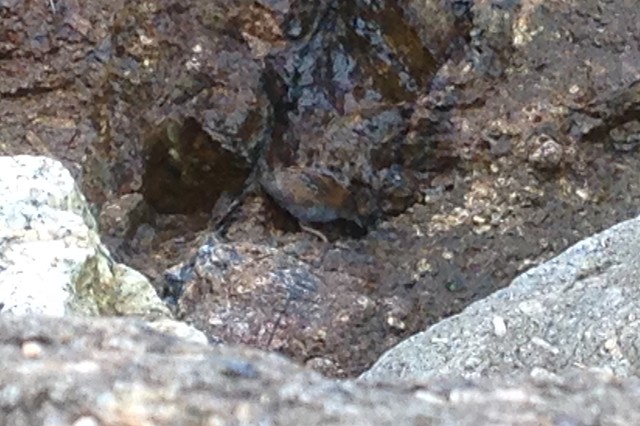
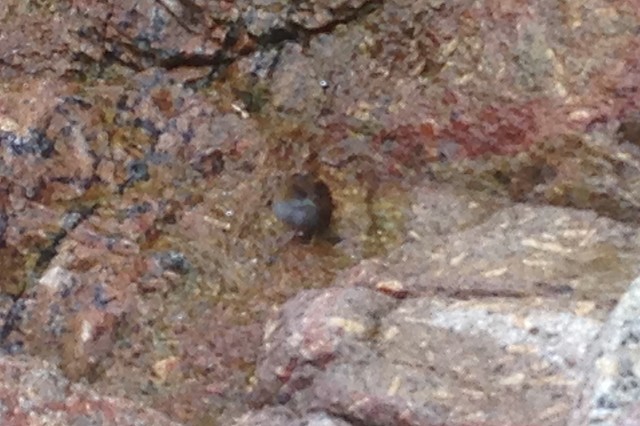
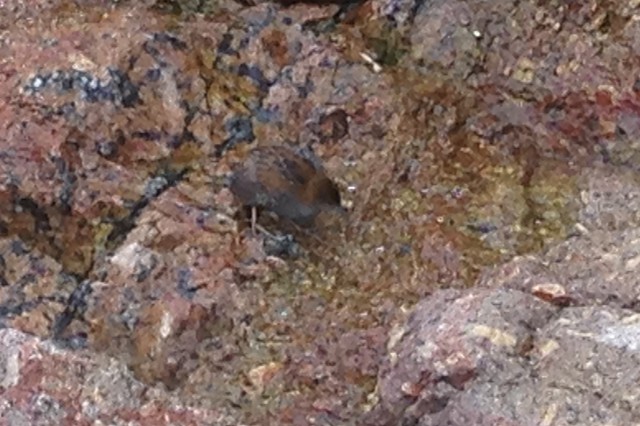
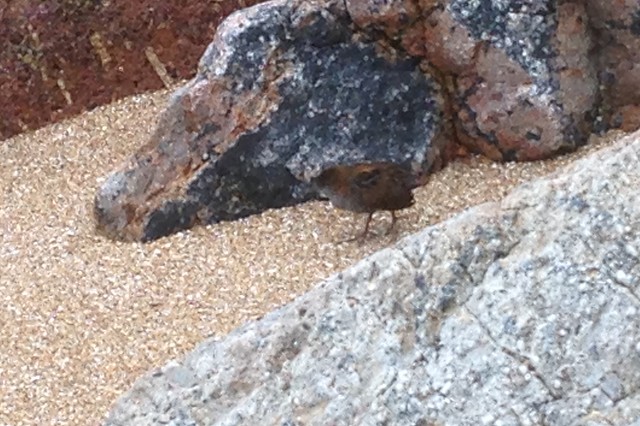
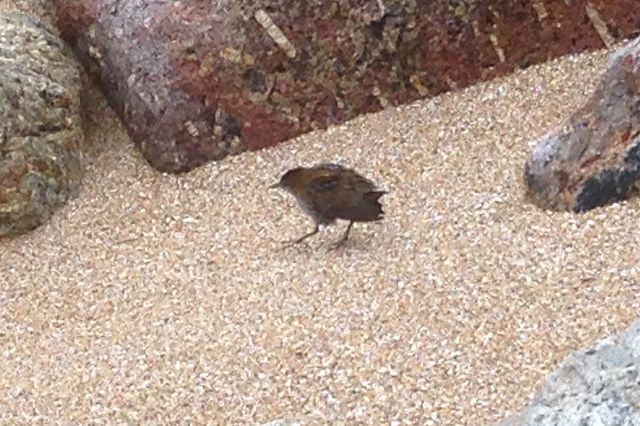
A selection of Alice's phone photos of the Baillon's Crake (Photos: Alice Davey)


